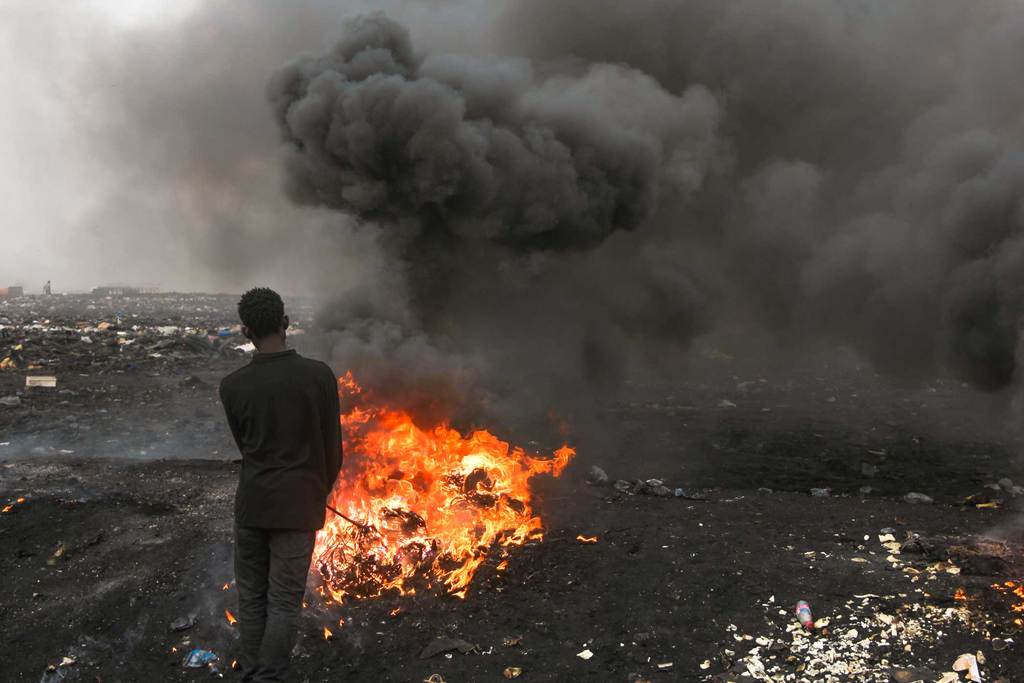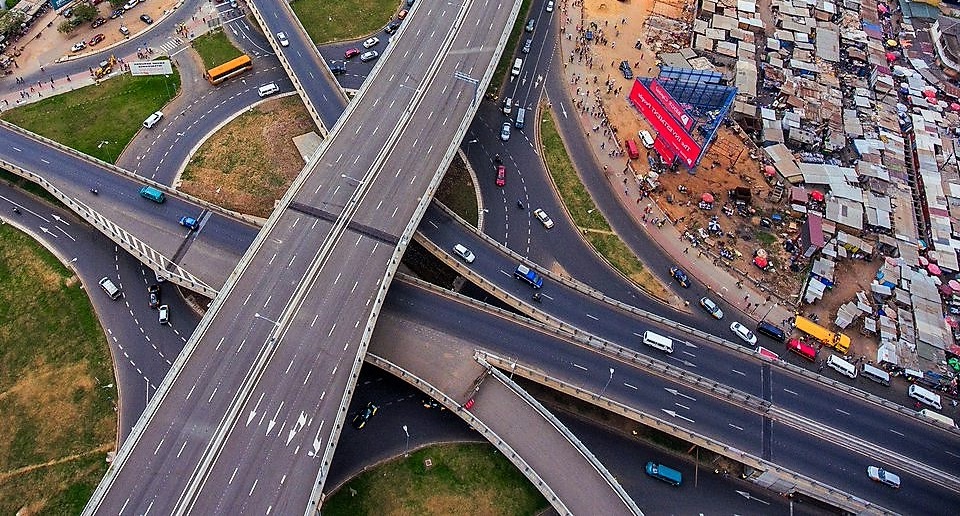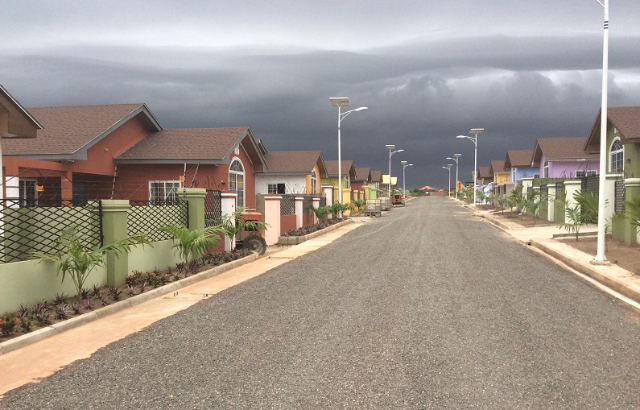Editorial
Infrastructural Planning, Prioritising & Investment:
on this rock Ghana shall be built.
Infrastructure deficit, hard and soft, has been undermining all the efforts towards achieving sustainable development and structural transformation in Africa, particularly in view of a rapidly growing population.
“Office of the Special Adviser on Africa (OSAA)”
The figures do not lie. Africa’s infrastructure has been playing catch up for decades. It is estimated that 60% of the population of Africa lacks access to modern infrastructure. And what makes for further grim reading is that 38% have access to electricity, 10% internet penetration, and 75% of Africa’s road network is unpaved. This bleak picture is confirmed by the World Economic Forum’s, Global Competitiveness Index (GCI) 2018. It places more than half of the least competitive countries in the world in Sub-Saharan Africa, due largely to the massive infrastructural deficit. Ghana is ranked 106 out of 140 countries in the GCI. Furthermore, the Infrastructure Consortium for Africa (ICA) weighs in with the assertion that, Africa’s infrastructural services costs are more than any place in the world. There have been several blueprints and initiatives that capture the importance of infrastructure in continental transformation. There is the integrated strategic blueprint for continental infrastructure transformation for 2012-2040 also known as the Programme for Infrastructure Development in Africa (PIDA) 2012 and the adoption of the African Union Agenda 2063. All these lofty initiatives come with big targets. PIDA is projecting development of 37,200km highways, 30,200km railways and 16,500km of interconnected power lines by 2040. It plans to add 54,150 megawatt of hydroelectric power and an extra 1.3 million tons throughput capacity at the ports. These ambitious targets and initiatives have huge resource implications. How does Ghana fit into the grand scheme of things, in this unfolding continental masterplan for infrastructure development? The Infrastructure Consortium for Africa in its 2017 report indicated that $81.6 billion of investments were committed to infrastructural development in Africa in 2017 from all sources, up from $66.9 billion in 2016.
Climate Change
“Climate Change” has become a contentious phrase in the political lexicon of some parts of the world, but the threat is real. Africa’s restricted infrastructure has borne the brunt of severe climactic impacts from climate change. The United Nations Economic Commission for Africa, African Union Commission, World Bank and the African Development Bank have teamed up and launched the Africa Climate Resilient Investment Facility- AFRI-RES. The aim is to strengthen the capacity of African institutions and project developers to integrate climate resilience into the planning, design and implementation of investments in critical sectors like, water, agriculture, energy and transport. It is estimated that 30% of global greenhouse gas emissions which is a core driver of climate change can be laid at the doorstep of facilities constructed by the infrastructure and urban development industry. Experts postulate that Africa’s infrastructure industry is at risk from climate change and to minimize the risk, there is a need to incorporate climate resilience into the planning and implementation of infrastructure projects undertaken.


Infrastructural Planning
Ghana has a mind-boggling arsenal of infrastructural plans in its intellectual armoury. It reminds us of these famous lines from the English Poet, Samuel Coleridge Taylor’s poem, the Rime of the Ancient Mariner: “Water, water everywhere, Nor any drop to drink” Planning is not the problem. There are plans, plans everywhere. In planning terms Ghana is spoilt for choice, with a glut of plans that await prioritising and investment. There are Long – term Plans, Medium – term Plans – District, Medium – term Plans – National, Medium – term Plans – Sectors, Outline of Ghana Infrastructure Plan (2018 – 2047), Integrated Transport Plans, and erm…Flood Prevention and Disaster Risk Reduction Plans for flood-prone Accra etc you name it! This mish-mash of plans has led some to assert that Ghana has no inclusive strategic national development plan which is the preserve of all and not just politicians or a clear national vision that the citizenry has bought into. The Constitutional Review Commission (CRC) which was established in January 2010 stated in its report issued in December 2011 that, the Commission was
“overwhelmed” by the clamour for a National Development Plan, although development planning was loudly absent from the raft of indicative set of issues for the consultative process.
The lacuna did not prevent the populace from ventilating on this issue of huge national interest. The CRC reported that given the “widespread, consistent and clear” nature of the calls, the commission devoted Chapter 3 of its report, From a Political to a Developmental Constitution, to “National Development Planning”. Highlights from the Report outlined reasons why the (Long-term Development) Plan should be national in character. One reason that leaps out of the bag of reasons assigned is, “it will ensure that national development is not centred on sectional political party manifestos; manifestos must rather be aligned to the Plan”. Furthermore, the Plan should be binding on all successive governments as this will ensure that there are no truncated infrastructural projects because of partisan political expediency.
THE HOUSING DEFICIT
Food, clothing and shelter are seen as basic needs or rights for humanity. There is an estimated housing deficit of 1.5 million new homes needed. Others estimate the deficit at 1.7million units or million units, suffice it to say, there is a huge deficit. The Ghana Real Estate Developers Association (GREDA) have made appeals to government to shoulder the infrastructural provision burden to enable them execute “affordable” housing schemes. The Vice Chairman of Regimanuel Gray Limited, a leading real estate company is reported to have said that, “about 40% of the cost of every house is infrastructure” adding that, it is the responsibility of government to provide the requisite infrastructure – roads, drainage, electricity and
water etc and this will have a concomitant effect in reducing the housing deficit and prices. Continue ReadingThis addresses the supply side. On the demand side of things there is an increasing clamour by Banks, and even the executive wing of government for a revision to the pension laws to make pension funds available for mortgages. The establishment of a National Mortgage and Housing Finance Scheme (NMHFC) was announced in the 2018 Budget Statement, to work with banks to provide cheaper local currency mortgages and construction finance. Meanwhile the debate about pension funds rages on. The yawning infrastructural gap makes sifting projects to prioritise and execute, a minefield of considerations. Party politicization of the development process is one of the highlights of the adjunct to the report by the Constitutional Review Commission (CRC). The people want cross-party agreement and bipartisanship as opposed to brinkmanship and “sectional policy” stand-offs holding sway over “a development plan which is national in character” To this the Ghanalinks Directory adds its voice and says: Vox populi vox dei…

